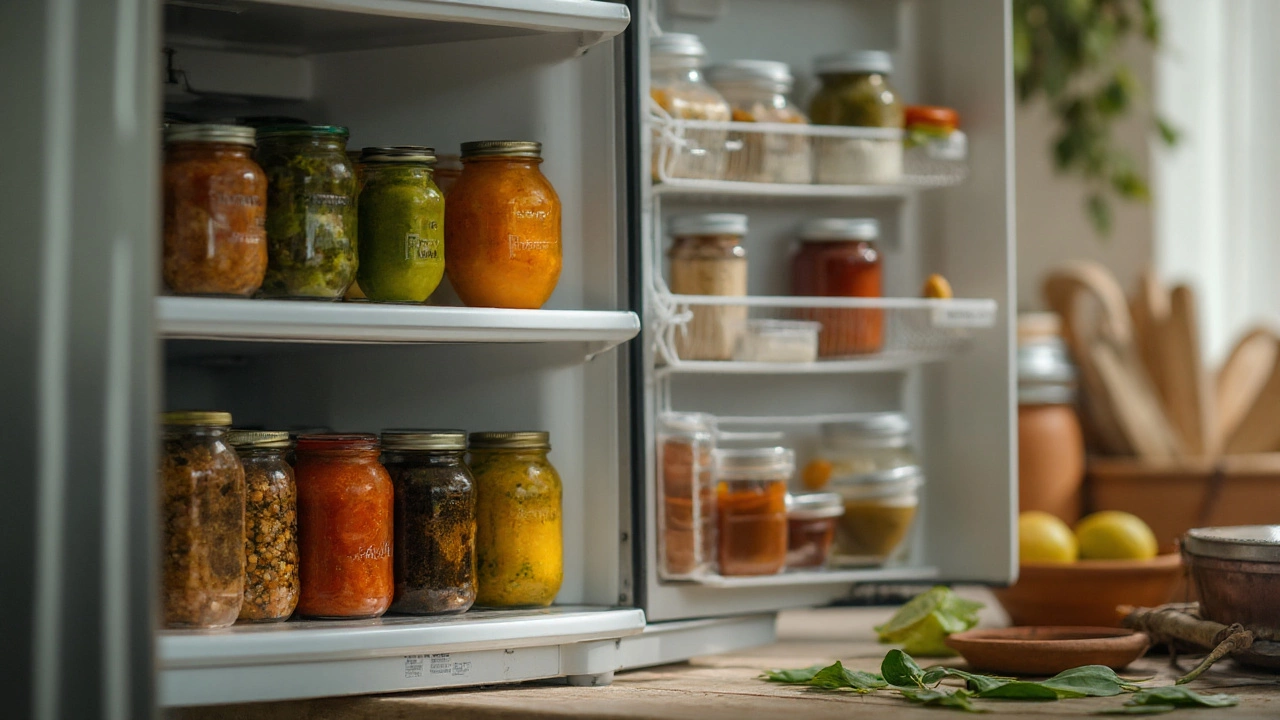How Long Does Chutney Last? Shelf‑Life Tips and Tricks
When working with chutney, a blended condiment of herbs, spices, fruits or vegetables, usually thick and vibrant. Also known as Indian relish, it adds punch to snacks, dosas and grilled dishes. Knowing how long does chutney last helps you keep that punch without waste.
One of the biggest drivers of chutney longevity is refrigeration, storing food at 4°C or lower to slow down microbial activity. A cold fridge can double or triple the safe window compared with room temperature. A second factor is fermentation, a natural preservation process where beneficial microbes produce acids that inhibit spoilage. Fermented chutneys, like those with raw mango or garlic, often keep for weeks because the acids act as built‑in preservatives. Lastly, food safety, practices that prevent harmful bacteria, molds and toxins underpins every storage decision – from using clean jars to avoiding cross‑contamination.
Key Factors That Affect Chutney Longevity
First, the ingredient mix matters. High‑acid items such as tamarind, lemon juice or vinegar create a low pH environment, which naturally extends shelf life. Conversely, chutneys heavy on fresh herbs or coconut without much acid will spoil faster because moisture and oils provide a breeding ground for microbes.
Second, container choice is crucial. Airtight glass jars keep out oxygen, slowing oxidation and mold growth. Plastic lids that don’t seal tightly let air in, shortening the safe period. Always sterilize jars by boiling them for five minutes before filling – a simple step that adds days to freshness.
Third, temperature consistency matters. Frequent temperature swings, like moving a jar from a warm kitchen counter to a cold fridge, cause condensation inside the jar. That extra moisture encourages bacterial growth. Keep chutney in the fridge right after it cools to room temperature and avoid leaving it out for more than two hours.
Fourth, portion control saves the whole batch. Scoop out only what you need with a clean spoon; diving a used spoon back into the jar re‑introduces germs. If you anticipate smaller servings, freeze portions in ice‑cube trays and transfer them to a zip‑lock bag once solid. Frozen chutney can last three months and thaws back to a fresh texture.
Fifth, watch the visual and smell cues. A sour or off‑note aroma, visible mold, or a change in color signals the chutney has passed its safe window. Even if the taste seems okay, discard it – foodborne illnesses aren’t worth the risk.
Putting these pieces together forms a clear picture: how long does chutney last depends on acid level, storage temperature, container seal, and handling habits. A well‑acidified, refrigerated chutney in a sterilized glass jar can stay safe for 2–4 weeks, sometimes longer if you add a teaspoon of oil on top to create a barrier. Low‑acid, fresh‑herb chutneys are best eaten within 5–7 days.
Below you’ll find a curated selection of articles that dive deeper into each of these topics. From quick fridge‑storage hacks to the science behind fermentation, the posts will give you actionable steps to keep your chutney tasting fresh every time you open the jar.

Homemade Chutney Shelf Life: Fridge, Pantry, and Canning Safety Guide
How long does homemade chutney last? Clear timeframes for fridge, pantry, and freezer, plus canning safety, spoilage signs, and storage tips you can trust.